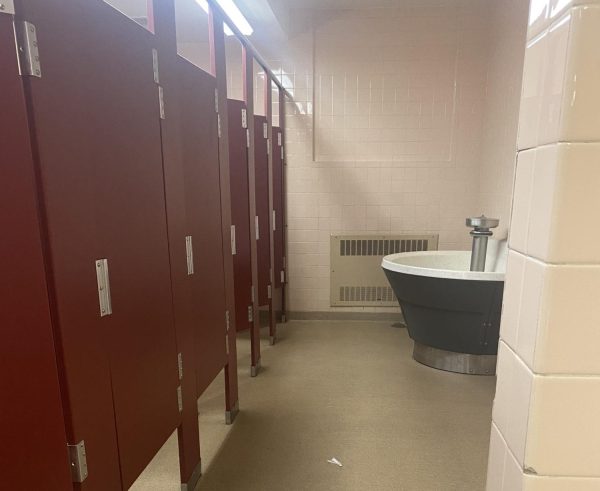For All You Ladies Out There!
Spring is coming, which means that it’s time to stop, smell the flowers, and shed the winter layers, except for girls of course because they are a distraction.
All across the country, and world, there are dress codes in schools. School boards say it’s done in order to keep a “safe/distraction free learning environment”. But for whom? When girls are being publicly targeted over morning announcements and shamed in front of entire classes are they really going to feel safe? Of course not! Being told that their bodies are a distraction and others have a right to regulate them is going to lead them to feel self-conscious, have low confidence, and be more prone to self-objectification.
Shining such a spotlight on the bodies of young women is going to play a part in how they perceive themselves. It leads them to believe they are more of a sexual object than an individual human with rights. The American Psychological Association’s Task Force on the Sexualization of Girls states that “Sexualization occurs when a person’s value comes only from his or her sexual appeal or behavior, to the exclusion of other characteristics.” The APA also says that self-objectification occurs when girls “learn to think of and treat their own bodies as objects of others desire.” Dress codes that loudly focus on the visibility of legs, shoulders, and bra straps teaches young girls that these things are of great importance to others and that they should also care a lot about them too.
Dress codes themselves are less about banning styles of clothes and more about banning girls’ bodies, especially those who happen to be bigger and curvier. Rarely does one see boys being sent home or publicly called out for violating a dress code. Even when they are wearing extremely sexist shirts that say in large bold lettering: “COOL STORY BABE, NOW MAKE ME A SANDWHICH.”
Often the reaction to dress code violators is more distracting and disruptive than the offense itself. Pulling girls out of instructional time in order to not only tell them off, but usually to make them call home or sometimes even change into their gym clothes is ridiculous and disruptive. Often teachers don’t even pull girls out of class to tell them they’ve broken the rules, instead they point it out very publicly in the middle of classes or hallways. A situation that is not only mortifying to the individual but spreads paranoia to other girls. This fear of being publicly ridiculed consequently leads to girls having a mindset that prioritizes dress over work and they often go home and plan outfits with pinpoint precision as a form of defense, leading them to neglect other responsibilities like their studies.
Dress code rules are not only insane in general, but also hard to conform to. For one they often directly oppose the mainstream style. So not only the clothes that girls want to wear are outlawed, but also the style they are forced into does not exist in the shops. Finding clothes that conform to rules like finger length shorts is incredibly difficult because they simply don’t manufacture shorts at such unflattering and out of style lengths. Clothes also don’t fit everyone the same; a dress that reaches the lower thighs on one girl might rest on the upper thigh of a taller girl.
The social norm that “boys just can’t control themselves” and that it’s the girl’s job to conform to this and make herself safe is reiterated by school dress codes. It gives boys this idea that they have a cultural right to be inappropriate, which they do not and under no circumstances should girls be blamed for boys’ bad behaviors. This mentality that schools are reinforcing is contributing to rape culture and is just flat out sexist. Instead they should be telling boys that they not only can but will control themselves.
At South Orange Middle School in New Jersey seventh grade girls have been fighting the dress code. Frankie Lindsay and her friends formed the group #iammorethanadistraction. After being harassed by chain emails and morning loudspeaker announcements by their principal they created the group in order to raise awareness for how frustrating it is for a middle school girl to be told that her appearance is compromising the learning environment. Ava Emilione, a member of #iammorethanadistraction, said, “It’s not about the clothes, really. I could care less that I have to wear shorts. It’s about the implications and the bigger message of the dress code- the message on the loudspeakers: “For all you ladies out there’” (Girls Speak Out Against Sexist School Dress Codes by Cecilia D’Anastasio, The Nation)!
School administrators’ micromanaging the bodies of young girls is in fact objectifying them and encouraging them to self-objectify. Dress codes implemented by schools deem girls as ‘sexy’ long before they even consider trying to be and it is a major problem that is often overlooked. And frankly, if a girl is too young to be wearing something because it’s sexy, then she is too young to be sexualized.

Ella Troutman is a sophomore at Westhampton Beach High School. She was born in the US Virgin Islands but moved to Remsenburg about three years ago. Ella...







